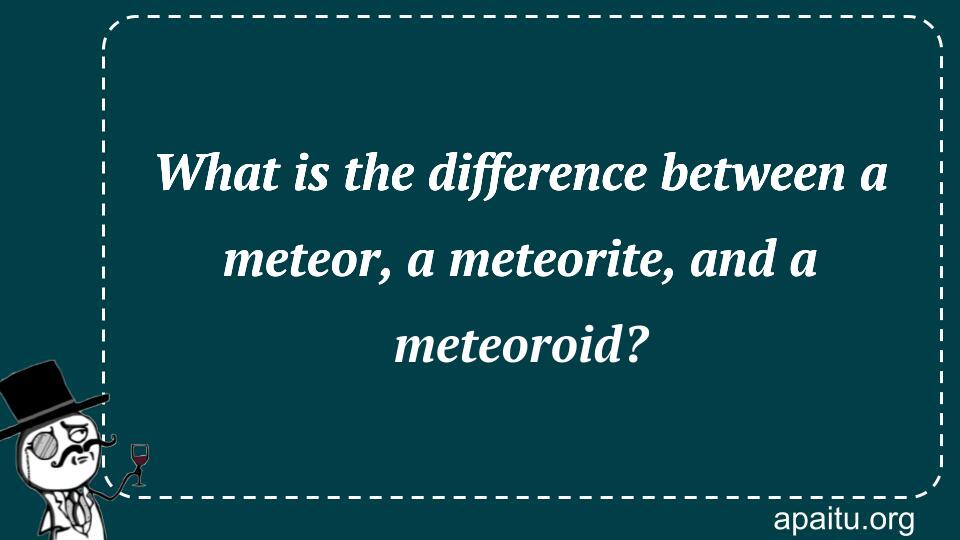Question
Here is the question : WHAT IS THE DIFFERENCE BETWEEN A METEOR, A METEORITE, AND A METEOROID?
Option
Here is the option for the question :
The Answer:
And, the answer for the the question is :
Explanation:

The terms meteor, meteorite, and meteoroid are often used interchangeably, but they actually refer to distinct objects and stages of a celestial event. The key difference between them lies in their location within the Earth’s atmosphere or in space.
Let’s start with a meteoroid. A meteoroid is a small rocky or metallic object that travels through space. These objects can range in size from tiny specks of dust to larger rocks measuring several meters in diameter. Meteoroids can be remnants of asteroids, comets, or other celestial bodies. They orbit the Sun and populate various regions of the solar system.
When a meteoroid enters the Earth’s atmosphere, it becomes a meteor. The friction between the meteoroid and the atmosphere causes it to heat up and produce a glowing trail of light, commonly known as a shooting star. Meteors are often visible to observers on the ground, especially during meteor showers when Earth passes through regions with a high concentration of meteoroids.
The final stage of this celestial journey occurs when a meteoroid survives its passage through the atmosphere and lands on the Earth’s surface. At this point, it is called a meteorite. Meteorites can vary in size and composition, ranging from small pebbles to large chunks of rock. They can provide valuable insights into the composition and history of our solar system, as they often contain materials that have remained relatively unchanged since their formation billions of years ago.
The key distinction between these terms is thus primarily based on location. A meteoroid exists in space, a meteor is a meteoroid that is burning up in the Earth’s atmosphere, and a meteorite is a meteoroid that has successfully reached the Earth’s surface. This progression from meteoroid to meteor to meteorite illustrates the journey these objects undergo as they interact with our planet.
It is worth noting that not all meteoroids survive the journey through the atmosphere and become meteorites. Most meteoroids burn up completely or fragment into smaller pieces, which disintegrate before hitting the Earth’s surface. Only a small fraction of meteoroids make it to the ground as meteorites, making their discovery a rare and exciting event for scientists and collectors.
understanding the difference between a meteor, a meteorite, and a meteoroid is primarily a matter of location. While a meteoroid is a celestial object traveling through space, a meteor occurs when a meteoroid enters the Earth’s atmosphere and creates a luminous streak of light. If a meteoroid manages to reach the Earth’s surface, it becomes a meteorite. These terms represent distinct stages in the life cycle of these objects and highlight the fascinating interplay between celestial bodies and our planet.